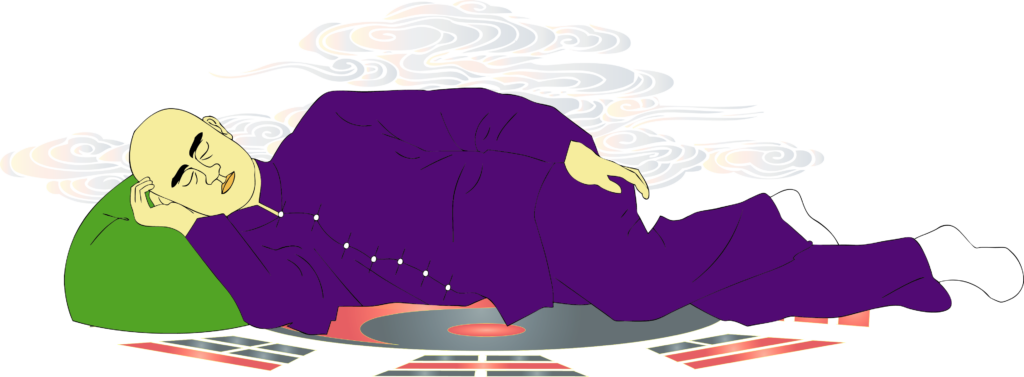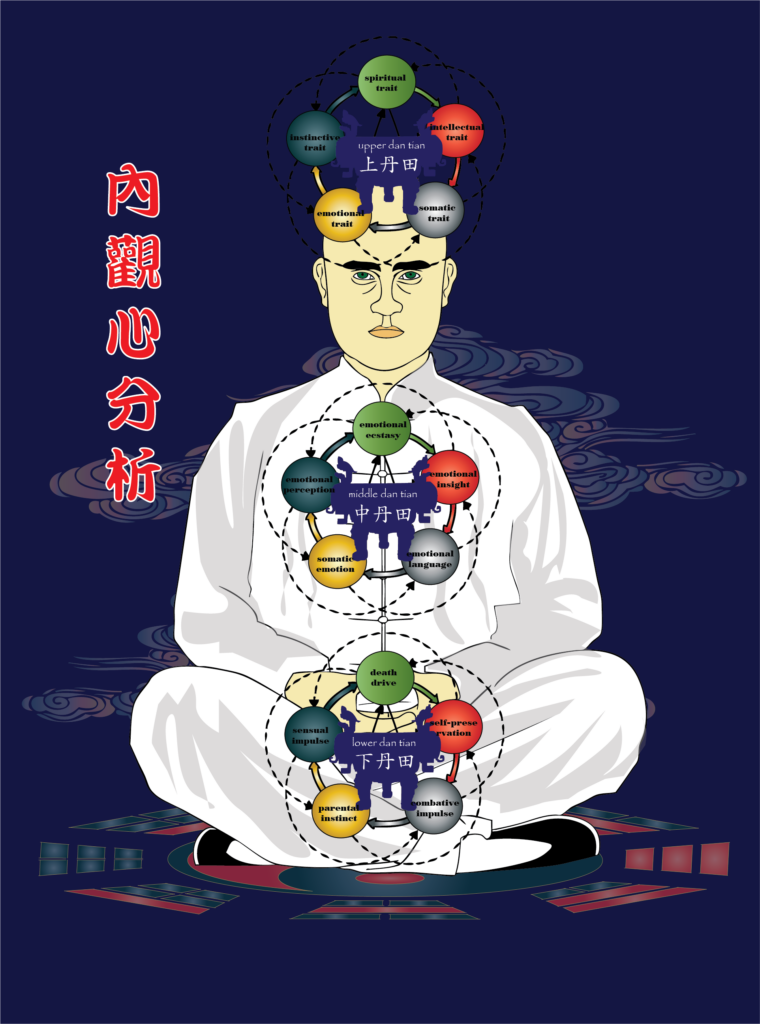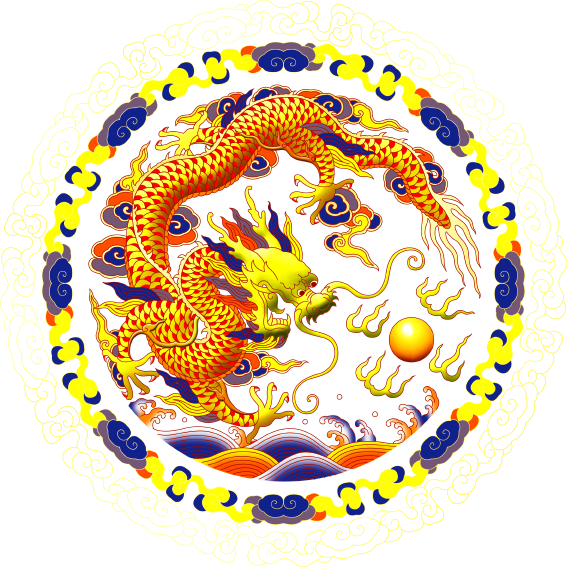混元派的禅法
The Hun Yuan Pai’s Meditation Method

The meditation technique of the Hun Yuan Pai school is divided into several levels. In the basic levels, we focus on our students achieving what is known as “靜” or “quietude”. The first thing our method focuses on is achieving bodily stillness or the perfect posture, which we call “正形” or “the correct posture”. In the first stage of meditation, controlling the body is the most difficult. It takes approximately a novice student to master relaxation to acquire the posture and the strength to sustain it.
In the second stage, the student focuses on developing what is known as “正呼吸” or “the correct breathing” to awaken the “氣” or vital energy. At this stage, the student is taught all the breathing techniques to strengthen the mind and body while developing more and more “靜” or “quietude” both physically and mentally.
In the third stage, the student begins to develop what is known as “正心” or “the correct mindset”. This is undoubtedly the most difficult part to achieve because mental silence, “觀” or self-observation, and serenity are qualities that take at least 90 days to begin to conquer.
The fourth stage focuses on developing what is known as the “初心” or “original mind”, a state of alertness that remains fully conscious and prepared to see things with the freshness of the first time, an essential attitude for perceiving the depth of things and learning knowledge.
The fifth stage focuses on developing what is known as the “残心” or “ferocious mind”, a state of connection where time, space, and the object or person where knowledge is applied are perceived simultaneously, providing a highly refined state of attention.
The sixth stage focuses on developing what is known as “无心” or “no mind”, a state of alertness where the five basic emotions (fear, anger, hatred, sadness, and joy) do not exist. It is often defined as a mind that is not fixed or occupied by thought or emotion, therefore being open to everything, in a permanent state of pure perception.
The seventh stage is known as “不动心” or “the immovable mind”, describing a condition that is not easily altered by internal thoughts or external forces.
The eighth part is known as the “先心” or “transcendent mind”, which is the mental state that transcends the first four states of the mind.

The advanced levels of meditation in the Hun Yuan Pai school’s method are studied when students have practiced under our method for at least a couple of years.

泰 定
Intense Concentration
This type of meditation can be described as a type of intellectual exercise that develops the practice of a state of concentrated attention. It focuses on developing mental control and concentrating psychic power, which is the sum of the total capacities of the individual’s physical, emotional, intellectual, and spiritual forces. In the first stage, the meditation concentrates on developing self-hypnotic control over the body through techniques such as breathing, posture, and movement. In the second stage, it explores mental programming through conscious and unconscious methods like affirmations, visualizations, and recitations.
止观
Ceasing Thought and Observing
This meditation is a practice aimed at achieving mental silence. By controlling neural tissues in different areas of the body, it focuses on quieting impulses parallel to the three basic layers of the brain: instinctive impulses, emotional impulses, and intellectual impulses. The goal is to quiet both the body and consciousness to allow sensations, emotions, thoughts, and energies to flow freely without interference.
存想
Precipitation or Visualization with the Spiritual Eye
This meditation technique involves visualizing the connection between humans and immortal deities representing universal forces, their symbols, colors, sounds, etc. The connection is visualized within the body, with deities residing in specific areas. The advanced levels awaken more powerful mental faculties. The Taoist tradition links the Hun with the Dao, explaining that the Dao is the matrix from which the universe existed initially in a state called “無極” (Wu Ji) or “without beginning or end.” The universe then expands into a state of “太極” (Tai Ji) or “supreme expansion,” governed by intelligence called “上凊” (Shang Qing) or “the superior pure.” This leads to the formation of different planes of existence inhabited by spiritual deities, ascended beings, and ordinary humans.These meditation techniques, including introspective meditation, concentration meditation, emotional cultivation meditation, and silent meditation, have profound effects on physiological states and aging, as per Taoist tradition. They help reduce stress, balance hormones, and reverse aging processes, leading to overall health and well-being. These advanced meditation practices reflect the depth and breadth of the Hun Yuan Pai school’s teachings, guiding practitioners toward spiritual growth and self-realization.The meditation practices of the Hun Yuan Pai school encompass a wide range of techniques designed to cultivate mental, emotional, and spiritual well-being. Each practice builds upon the previous one, leading practitioners on a journey of self-discovery and enlightenment.
禅论
Theory of Meditation

The physiological changes experienced by practitioners of Taoist meditation are profound, resulting in improved bodily functions. Research indicates reductions in respiration, oxygen consumption, and metabolic rate, accompanied by changes in hormone secretion and release. According to Taoist tradition, long-term practitioners may exhibit a biological age of five to twelve years younger than their chronological age. Perhaps most significantly, the hormonal imbalance associated with stress, which accelerates aging, is reversed, slowing or even reversing the aging process.
The Hun Yuan Pai school’s meditation techniques offer a comprehensive approach to holistic health and spiritual development. Through introspection, concentration, emotional cultivation, and silent meditation, practitioners can achieve profound states of awareness and well-being, transcending the limitations of the physical body and mind.
Incorporating these advanced meditation practices into one’s daily routine can lead to profound transformation, promoting harmony, balance, and longevity. As practitioners deepen their understanding and mastery of these techniques, they unlock the true potential of the mind, body, and spirit, ultimately leading to a life of fulfillment, purpose, and enlightenment.
